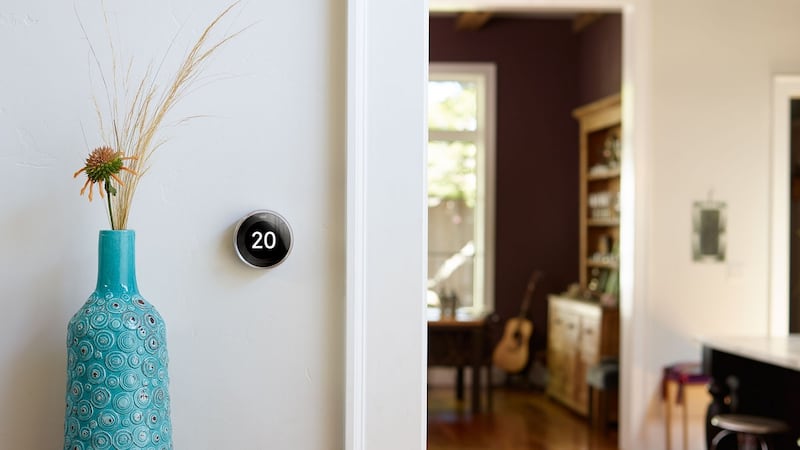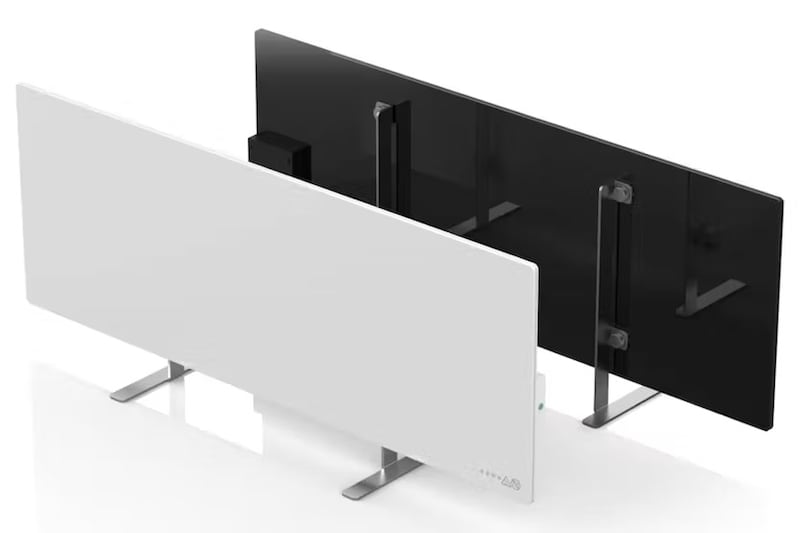Winter is on the way, and while it is hard to predict the weather, the days have already got significantly shorter. That means rising energy bills, so it is a good time to start thinking about how a few small – and not so small – changes to your home could make a difference.
Smart plugs
There was a time when you would have looked at a smart plug and wondered why they were even needed. But they have proved their usefulness time and again, from saving energy by cutting out standby mode for appliances to helping out with home security by making it seem as if someone is at home.
Think of them like a high-tech version of a timer plug, only better. Not only can you set schedules and timers for the plugs, and by default the devices that are plugged into them, you can also control them from outside the home when needed by linking the plugs to your home internet connection.
There are a number of options out there, from TP Link Kasa and Emporia to Eve and Wemo. Each has its own app, although they can be added to different smart home systems – Google, Alexa or Apple HomeKit – to allow you control all the connected devices in your home from the one place.
RM Block
Imagine on a dark winter evening, your phone’s location is used to tell your smart home system that you are almost home, which in turn tells your smart lights to turn on in the hall, switches on the TV or radio, and turns on the kettle
On the down side, the plugs can be expensive, although TP Link’s Tapo range offers some reasonably priced options that don’t require another hub to connect to your home network for remote access.
Some plugs can cost as little as €11, but more expensive versions bring extra features such as energy monitoring for appliances.
They have also got much smaller, too; the early versions of the plugs were large and unwieldy, and didn’t always suit a multi socket set-up, leaving you without access to the adjacent plug.
Your smart plugs can also be linked with other smart devices in the home to help run things smoothly. Imagine a scenario when, on a dark winter evening, your phone’s location is used to tell your smart home system that you are almost home, which in turn tells your smart lights to turn on in the hall, switches on the TV or radio, and turns on the kettle, so you come home to a more welcoming house.
The other word of caution: eventually, some may need to be replaced if something has gone wrong and they no longer turn off the power properly on command.
Smart bulbs
LED bulbs are more energy efficient than their incandescent predecessors but the new generation of smart bulbs can help bring that even further by allowing you to control lights from outside the home.
Some of the bulbs can be basic, allowing you to turn them on and off, set schedules and link into your wider smart home system to respond to events such as triggering motion sensors. Others are dimmable, or can have their colour temperature changed from warm white to cool white at the touch of a button.
And if you are feeling really fancy, there are bulbs that can change colour, giving you the ability to recreate the feel of candlelight, for example, or turn your lights to blue or yellow on a whim.
Philips Hue is one of the better known systems, offering a decent range of bulbs from standard bayonet fittings and screw-in E27 bulbs to GU10 and strip lighting. It even has outdoor lights and a motion sensor that can be used to trigger the lights.

Some of the smart functions require the Philips Hue bridge to work, a small box that plugs into your home wifi network and connects the bulbs to your home network to allow remote access.
Others, however, will just connect directly to your wifi hub, and can be linked up to Google, Alexa or Apple HomeKit to allow your smart speakers to manage everything with voice commands, or set up routines that turn lights off when the last person leaves the house.
TP-Link’s Tapo bulbs are a good choice for basic but reliable smart bulbs that won’t break the bank, while Wiz bulbs offer more stylish options such as filament globes.
But there are times when it doesn’t make sense to swap regular light bulbs for smart ones. If your room has several light fittings, for example, such as integrated GU10 bulbs, there is no real need to have individually controlled bulbs; not only would it be expensive but it would also be excessive considering most people would prefer to use the bulbs as a group.
There are other options, such as smart light switches that can connect to your home’s network, that would give you the same smart control over your home’s lighting system without the expense of individual smart bulbs. It is a little more complicated though than simply swapping a light bulb.
If you have a bit more to spend, you could go for €200 smart lighting installations such as Nanoleaf, with its modular colour-changing panels that come in shapes from hexagon and triangles to lines that can be used as a feature in your home. Or you could pay €700 for Dyson’s Solarcycle Morph lamps that adjust the colour temperature of the light according to the time of day and task that you are carrying out, and can be controlled through your smartphone.

Heating controls
Smart heating controls are no longer a niche product that appeal to only the tech-savvy. Now a common sight in Irish homes, they are even backed by the Sustainable Energy Authority of Ireland (SEAI), which has a grant of up to €700 to help you get the new system installed.
It is not without good reason. Smart thermostats and controls can help cut wasted energy – and money – by ensuring that your home heating works for your schedule.
For example, the Nest Thermostat learns your schedule and what temperature you like your home, and adjusts your heating to match that. It can use your phone’s location to know when you are on the way home and start up your heating so you return to a warm home in the depths of winter, And likewise, when no one is home, the thermostat will know that too and turn off the heating so you aren’t wasting energy.

Others such as Hive and Climote use a combination of schedules and remote control to make sure your home heating is run more efficiently. If you are away for a few days, it is easy to adjust the heating to make sure you aren’t heating an empty home while also ensuring that you keep it above a minimum temperature – just in case.
There are some other options if you don’t want to install a smart thermostat, or if your heating system isn’t suitable for them.
Aeno has a range of electric heaters with some smart controls built in. The Premium Eco Smart Heater (from €300) uses infrared technology so is said to be more efficient than traditional oil-filled, fan or convection heaters. It also has a minimalist look, comes in black or white, and the new version has an LED panel so you can see the temperature, current mode and access heating controls.

You can also hook it up to your smart home system or control it via its own app.
Dyson has a range of smart fans that not only heat or cool your room but also purify the air, so you cannot only heat the room but also remove some common indoor pollutants while you are at it. They’re not cheap, at €700, but the more expensive versions can be controlled via an app so you can start (and stop) the device from wherever you are – at home, at work or overseas.
Cleaning
The winter months also mean there will be a much higher chance of wet weather. And wet weather means more chance of dragging mud and other weather-related debris into your home.
You can spend the next few months diligently vacuuming and mopping your hallway several times a day, or you can entrust the basics to a robot, who will keep the worst of the mud and dirt under control.
They aren’t cheap, though, especially if you already own a perfectly good vacuum and mop.
The experts in this field are iRobot, which originally brought out the Roomba robot vacuum in 2002. It wasn’t the first – that goes to Electrolux – but it is probably the best known.
One of its latest is the Roomba J9+ (€1,399), which not only vacuums and mops, but also has a base that automatically empties the debris from the bin and refills the liquid to mop the floor, so you don’t have to.
Cheaper options include the Eufy Robovac X8, which comes in at less than €500.






















